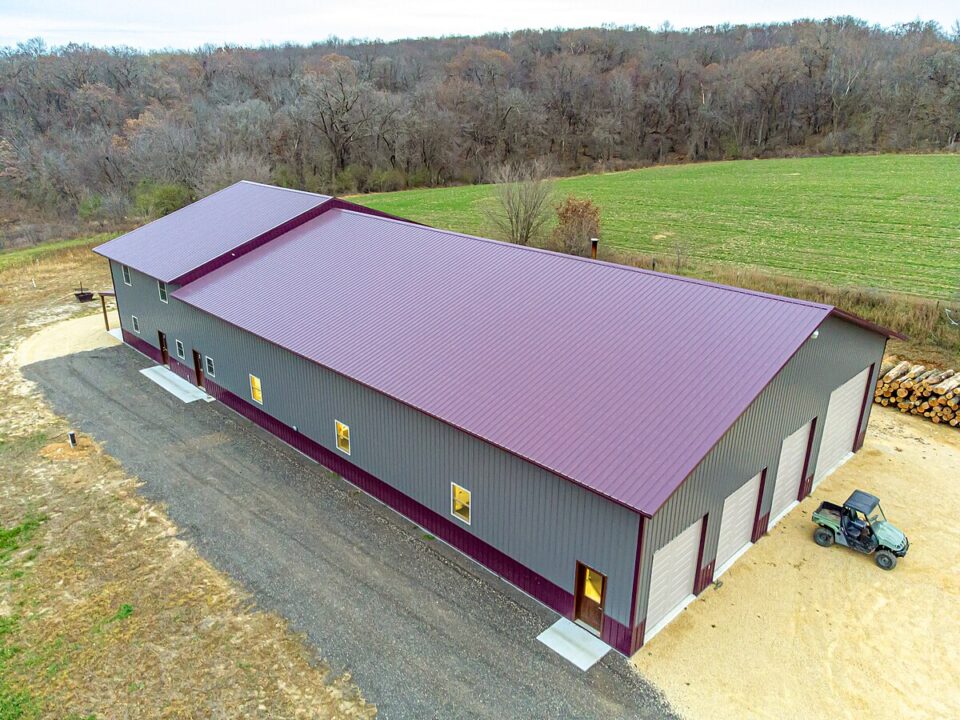Imagine the icy winds of the Canadian North or the scorching desert heat. How do structures survive these extreme elements without crumbling under pressure? The answer lies in metal-based construction, particularly steel buildings. Renowned for their durability, steel structures are a popular choice for those seeking long-lasting performance in harsh climates. But what makes them so superior when Mother Nature is at her most challenging?
In this blog post, we’ll dive into the undeniable benefits of metal structures in extreme weather conditions. You’ll learn why experts across Canada are choosing steel for building projects in unforgiving environments. Whether bracing against snowstorms or desert heatwaves, steel has become the knight in shining armor for resilient construction. Let’s uncover why.
The Allure of Metal: Why Steel is the Go-To Choice
Steel’s strength is its foremost advantage. But what sets it apart from traditional materials such as wood or bricks is its unique ability to withstand a wide range of temperatures and weather conditions. Picture a fortress guarding against brutal assaults, equipped thoroughly to triumph.
Unmatched Durability in Adverse Conditions
In harsh climates, construction materials face regular punishment. Frost, hail, wind, and heat all conspire to erode structural integrity over time. Steel, being an iron-carbon alloy, resists these attacks with unrivaled toughness. It’s like the hero of its own story—built to last and endure through decades of climate challenges. This longevity not only protects inhabitants but also mitigates the continuous cycle of repairs and replacements.
More importantly, steel’s durability means it handles seismic activities more effectively. When earthquakes strike, buildings need flexibility and strength, a quintessential feature of steel frameworks. The resilience of metal-based structures can minimize damage, ensuring safety and peace of mind.
Cost-Effectiveness: The Long-Term Investment
Cost can be a decisive factor when selecting construction materials. Initially, steel buildings may seem costly, but they shine as cost-effective solutions in the long run. Being able to endure for longer periods, they reduce the need for repairs and maintenance associated with more fragile structures. Furthermore, steel’s adjustability means modifications can be executed without much hassle or expense.
Consider energy efficiency as another dimension of cost-effectiveness. With proper insulation—easily achievable with modern steel structures—utility bills can come down significantly, even in extreme cold or heat, offering savings year-round.
Why Energy Efficiency Matters
Environmental responsibility and sustainability are at the forefront of modern architecture. Steel buildings offer excellent thermal properties that aid in regulating internal temperatures, leading to lower energy consumption. They are akin to a well-woven thermal jacket warding off the chill or mitigating suffocating heat with equal proficiency.
Adaptability and Versatility: The Universal Appeal of Steel
Designers and architects are drawn to the endless possibilities steel provides. From agricultural barns to urban skyscrapers, steel suits every purpose, adapting swiftly to the unique demands of each setting. For projects in remote areas or sites with challenging accessibility, steel’s pre-fabricated nature simplifies transportation and assembly, slashing construction timelines drastically.
Expedited Construction Processes
Time often equates to money in construction. Capturing the advantages of steel, with its rapid assembly process, developers can reduce lead times significantly. The concept? Like assembling a jigsaw puzzle: simply join the pieces, and the picture forms quickly—a delightful synergy of precision and planning.
This efficiency means buildings can be ready for occupancy sooner, whether to expedite commercial activities or settle in a newly constructed residential dwelling, presenting undeniable value for developers and occupants alike.
Fighting Back Against the Elements
Steel buildings can combat harsh weather events more effectively than materials susceptible to rot, mold, or fire. Additionally, they excel in environments where moisture control is crucial, such as coastal regions or high-altitude locales experiencing significant precipitation.
Fire Resistance: A Credible Defense
Fire hazards pose serious risks, especially in areas prone to wildfires. Steel’s non-combustible properties make it an ideal candidate for resisting fire, keeping occupants safe while mitigating damage. Picture a warrior’s shield—impenetrable and steadfast in protecting against fiery onslaughts.
Natural Resistance to Pests and Decay
Where traditional materials may fall victim to termites or pests, steel stands unaffected. This natural resistance alleviates concerns about infestations and structural degradation over time, reducing intervention costs and maintaining structural health.
Consulting the Experts for Optimal Results
To harness the power of metal-based construction fully, getting insights from the steel building experts Canada is crucial. They bring invaluable expertise and knowledge—keys to unlocking steel’s true potential in specific environments, ensuring optimal results aligned with both structural and aesthetic goals. By engaging experienced professionals, projects can avoid pitfalls while maximizing the inherent advantages of steel.
The verdict is clear: in harsh climates, metal-based construction is not just a viable option, but a superior one. The materials’ resilience, adaptability, and energy efficiency mark them as champion players in the construction league. Whether dealing with snow-laden clouds or scorching sunrays, steel buildings withstand time’s test, demonstrating unmatched performance.
**Summary: Embracing Steel for Resilient Future**
Steel buildings epitomize cutting-edge resistance to harsh climates, blending durability with cost-efficiency and versatility. With rapid construction processes and natural resilience against fire, pests, and decay, they define a new era of construction designed to last and protect. As we look to the future, seeking the guidance of steel building experts in Canada ensures these incredible structures are optimized for every unique project and climate challenge. Together, we can brave the elements, unwavering in the face of adversity.
Are you ready to join the steel revolution and build a steadfast future?


